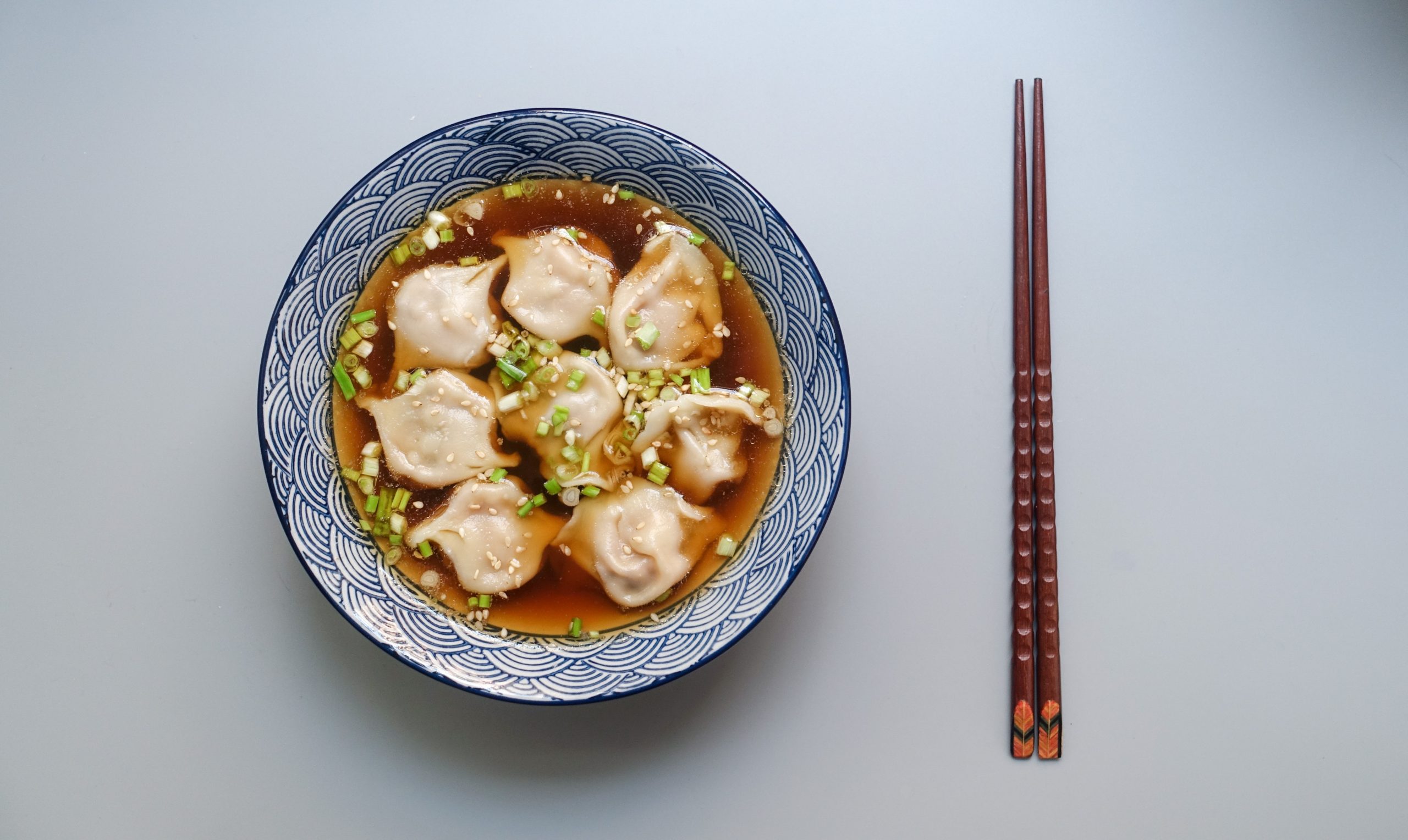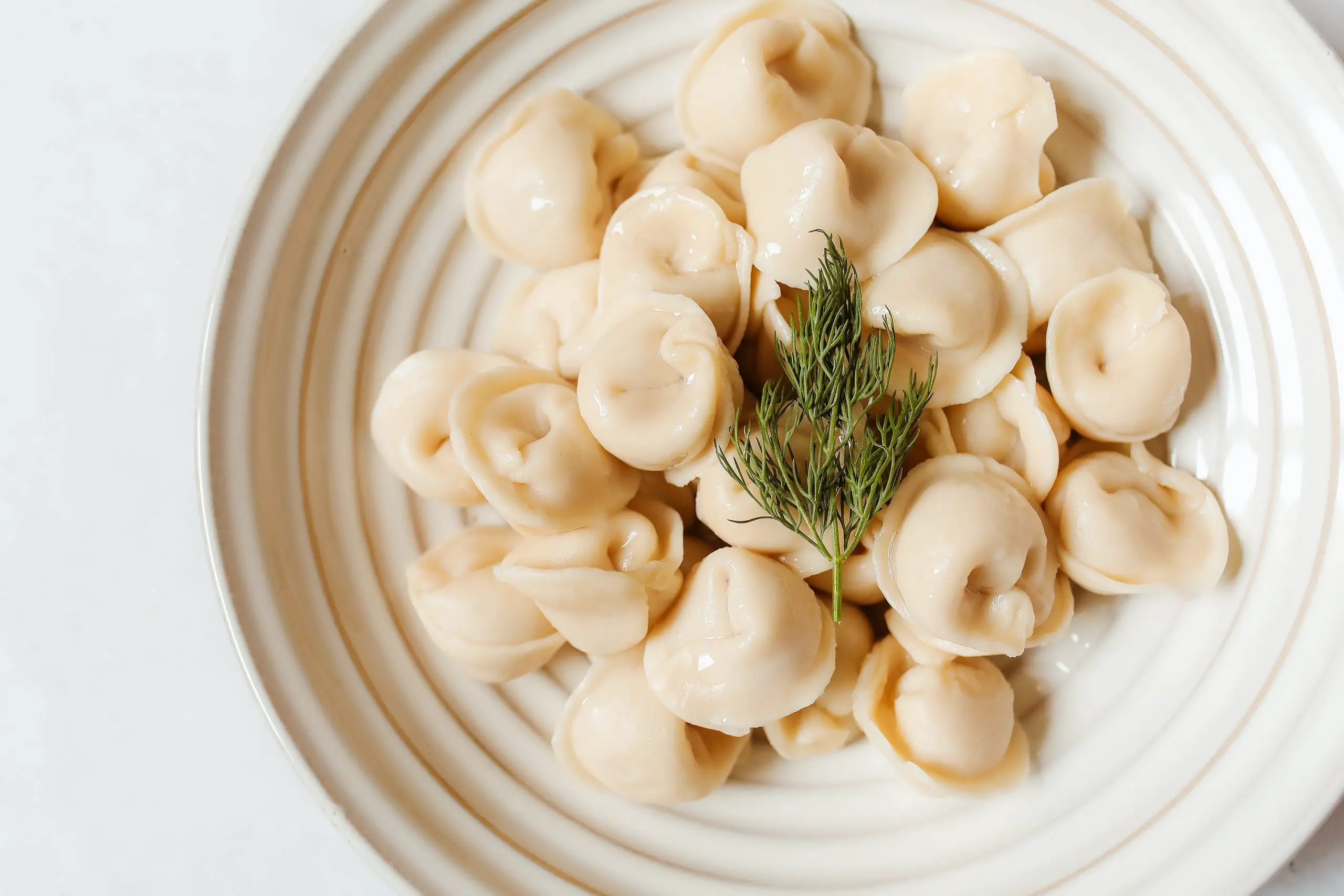The best way to keep dumplings fresh is to freeze them. Whether store-bought or hand-made, dumplings can be kept in the freezer for three months. To prevent them from sticking together and to make them suitable for cooking straight from frozen, freeze them before transferring them to freezer-safe bags or containers. So let’s begin! If you want to freeze the dumplings, don’t worry; Here, you will find all the important information about dumplings and their shelf life.

How to Freeze Dumplings?
The ideal method is to freeze the dumplings. I often place the pleated dumplings on a baking sheet that can fit in the freezer. You can alternatively arrange the dumplings in a row on a sizable platter. Verify that the dumplings don’t contact one another.
If not, the dumplings will cling together and congeal into a lump. After that, place the baking sheet immediately in the freezer. The exterior of the dumplings will be tough after many hours. The dumplings are ready to be taken off the baking sheet and placed in freezer bags.
The first thing to know is that frozen dumplings can be made from cooked and uncooked batter. Just be careful since they can cling together. The actions you must perform to freeze dumplings successfully are listed below:
- Cool: Cooked dumplings should be enabled to cool to room temperature before freezing, which shouldn’t take too long. This step can be skipped if you’re freezing raw dumplings.
- First, freeze: On a baking sheet lined with parchment paper, your dumplings should be placed, so they do not touch one another. The dumplings should then be placed inside the tray and in the freezer until they have solidified. It should take 1-3 hours to complete.
- Please put it in a freezer-safe container: Put each of your dumplings in a freezer-safe bag or container after they have frozen solidly on the tray. Then, remove the tray from the freezer.
- Identify and Freeze: Before putting the dumplings in the freezer, mark the front of the bag or container with the date you made the food and the expiration date. Remember that dumplings keep for roughly three months in the freezer.
Additional Tips for Freezing Dumplings
Now that you know how to freeze them, here are our top recommendations for getting the best results from freezing dumplings:
- Avoid refrigeration: It’s crucial to avoid cooling uncooked dumplings in the refrigerator. They will become mushy if you do this, which you want to avoid. Therefore, freezing uncooked dumplings, which you don’t want to eat immediately, is the only way to put them fresh.
- Dumplings, either homemade or purchased, can be frozen: Whether you prepare them yourself or get them from the supermarket, they freeze exactly. Even frozen dumplings that may be placed in the pan right away are available at Chinese supermarkets.
- The longer you hold the dumplings in the freezer, the much they will lose their texture, consistency, flavor, and taste because they may start to lose moisture, their contents may start to separate, and eventually, they will deteriorate. This is true for most items that you freeze.
- Also, remember that the length of time you may freeze the dumplings depends much on how fresh they are when you freeze them. Older dumplings might freeze better than freshly made ones.
- Additionally, before placing the containers or frozen bags in the freezer, ensure they are completely sealed. Straws or a vacuum sealer could be useful here. Ensure that the freezer’s temperature remains steady as well.
- To boil, fry, steam, or use a microwave: Depending on your taste, you have a broad range of choices regarding how to prepare dumplings, including steaming, boiling, microwave cooking, and frying. Additionally, since they don’t need to be defrosted first, you can prepare your dinner guests’ meals faster.
Can Dumplings be Refrozen?
You probably already know that the distinctive texture of dumplings is one of what makes them so tasty. Therefore, you want to avoid it freezing them more than once. There are better ways to refreeze dumplings.
Dumplings will lose moisture after being frozen and thawed, making them soggy or crumble when cooked. If you want to minimize waste, freeze your dumplings in smaller portions and take them out of the freezer only when you’re ready to cook them.
How are Dumplings Defrosted?
Dumplings can be defrosted before cooking or reheating. Whatever cooking technique you use, the best way to prepare them is straight from the freezer. You may move the frozen dumplings from the freezer to the refrigerator to defrost them.
If you want to reheat the dumplings, you can cook them in a steamer. Allow them to defrost for a minimum of several hours. Remember that there is no need for thawing when reheating entirely frozen dumplings.
Prepare the bamboo steamer for this approach and add the dumplings one at a time, spacing them apart to prevent touching and sticking together. It would be best to cook the dumplings by heating a big pot of water to a high temperature. After that, you can add whatever many frozen dumplings you want and continue cooking them until they float.
How should you Reheat Frozen Dumplings?
Make sure that the dumplings are neither overcooked nor undercooked when reheating. Although it appears difficult, doing this is rather simple. Dumplings can be reheated in various ways, including steaming, frying, shallow frying, deep frying, microwaving, and even baking.
The method you use will depend on how the dumplings were cooked the first time. Pick the same cooking method used to prepare the dumplings the first time you want to reheat them.
Here are the Top Three Effective Methods for Reheating Dumplings:
Method 1. First boiling: The most basic and easiest method of reheating most foods is to boil them. All you want to do is wait till the water is boiling before adding the dumplings, frozen or not.
Once stirred, let them sit until they float to the top. The length of time needed to boil dumplings will increase with their size. Typically, it takes 3 to 5 minutes to cook fully. After removing them from the water with a slotted spoon, store them on a serving dish.
Method 2. Steaming: Steaming is quicker because a small pot and a few glasses of boiling water are all required. This method of reheating dumplings requires a bamboo or metal steamer for your saucepan.
If you’re using a metal steamer, coat it lightly with oil. The steamer must be lined since frozen dumplings will stick to the bamboo. Napa cabbage leaves make the ideal liner if you have access to them. Another great option for making a non-stick surface is parchment paper.
Method 3. Steam-Frying: Dumplings like gyoza and gow gee are steamed or fried using the potsticker method. This technique involves frying the dumplings, adding water, and covering the pan to create steam. The dumplings are fried again once the water has evaporated, adding a distinctive crispy coating. Dumplings tend to stick. Thus, it is advised to steam-fry them in a non-stick pan.
How Long will the Dumplings Freeze?
Dumplings keep well in the freezer for about three months. Dumplings can be frozen raw and cooked, but you’ll need to freeze them on a tray before packing them. If you skip this step, your cakes will stick together and be very difficult to separate.
Frozen dumplings stored at temperatures ranging from -28 to -12 were studied to accurately forecast the shelf life of quickly frozen food during temperature-fluctuation storage and track changes in its quality. Physical and chemical indicators such as acid value, peroxide value, moisture content, brightness, and sensory evaluation of the dumpling skin were identified.
BP neural network and effective cumulative temperature theory were utilized to forecast the shelf life of quickly frozen dumplings. A comparison analysis was conducted using a kinetic model. The outcomes demonstrated that the experimental and predicted values for the BP neural network were well-matched, with a maximum error of 3.29 percent.
Which is Better to Freeze, Homemade or Store-Bought?
Both have their benefits. Making your dumplings gives you more control over the uniformity and quality of the materials, which eases your concerns about freezing. The refrigerator life of store-bought dumplings is widely recognized to be longer than that of homemade dumplings, as was already indicated. In light of this, it relies on the situation and your convenience.
Do Cooked Dumplings Freeze Better than Raw or Uncooked Ones?
Dumplings that are undercooked and raw can be frozen for a longer period and with better outcomes. However, there isn’t much to worry about when freezing cooked dumplings because they freeze just fine if you store them correctly and see very little change in texture, flavor, or quality.
Conclusion
One of the most well-liked and delectable Asian appetizers is the dumpling, which can be made in various ways at home. Depending on your desire, they can be steamed or fried and are typically packed with meat, seafood, and veggies. The best techniques for properly freezing dumplings in your home’s reassure and safety are included in this complete, step-by-step guide, and we hope you found it useful.
Whether the dumplings are cooked or not, you must completely wrap them before putting them in a container and freezing them. Up to three months can pass after freezing dumplings. Dumplings can technically be frozen, but they will only last for a while. Therefore, it is advised that you eat them as soon as possible for the great flavor, from three to, at most, six months after freezing.

